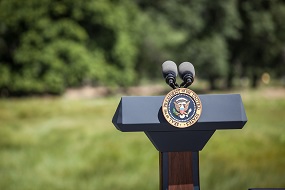On January 30, 2017, President Trump signed an executive order aimed at reducing the regulatory compliance burden on small businesses by requiring every federal agency wishing to enact new regulations to single out two old regulations for repeal. This two-for-one plan would reduce the number of federal regulations by 75 percent, according to President Trump, who was quoted as saying that America’s regulatory landscape has made it “virtually impossible to expand your existing business.” This executive order is in addition to the freeze on all new and pending regulations put into effect by the Trump administration on January 20, 2017.
At first blush, the freeze and two-for-one order seem to be a tidy solution to the increasing amount of regulations that Republicans have focused on for years. However, there are certainly complicating factors. For example, an FAA regulation that requires airplane fuselages to be inspected for cracks was halted in its implementation under the freeze. The Trump administration—facing backlash after this was highlighted by the media—has carved out an exception to the freeze and two-for-one rule for those regulations that are related to “health, safety, financial, or national security matters.” However, a great deal of uncertainty as to what regulations qualify under the carve-out still remains.
Implementation of the regulatory freeze and two-for-one rule in the tax world, and its specific impact on exempt organizations, is difficult to predict. Tax commentators have noted that it is unclear whether revenue procedures, revenue rulings, notices or other IRS guidance will be considered “regulations” and subject to the new rules. In an effort to provide some clarity, the Office of Information and Regulatory Affairs issued a memorandum interpreting the two-for-one rule as only applying to “significant” regulatory actions, which would appear to exclude the vast majority of IRS publications and regulations. However, it remains to be seen whether the Trump administration will be satisfied with that interpretation, given the broad language contained in the regulatory freeze memorandum to include any “guidance document.” Commentators have also noted that the IRS’s annual Priority Guidance Plan that identifies tax issues requiring attention currently has 281 projects listed for the 2016-2017 fiscal year’s allocation of IRS resources. The plan will certainly be impacted, as the IRS and Treasury will now have to weigh the consequences of cutting two current regulations in addition to promulgating new guidance.
Other more general unanswered questions include whether the regulations tapped for repeal can be unrelated, or even from a separate agency; whether the two repealed regulations have to be eliminated before the new regulations can be enacted; and what exactly would qualify as a “regulation,” as this term can vary from agency to agency. Finally, four organizations (including Natural Resources Defense Council and Earthjustice) have filed a lawsuit in federal district court seeking to block the two-for-one rule.
For more information analysis of potential ramifications of the two-for-one policy:
Trump’s “Two-for-One” Regulation Executive Order
Implementing a Two-for-One Regulatory Requirement in the U.S.


